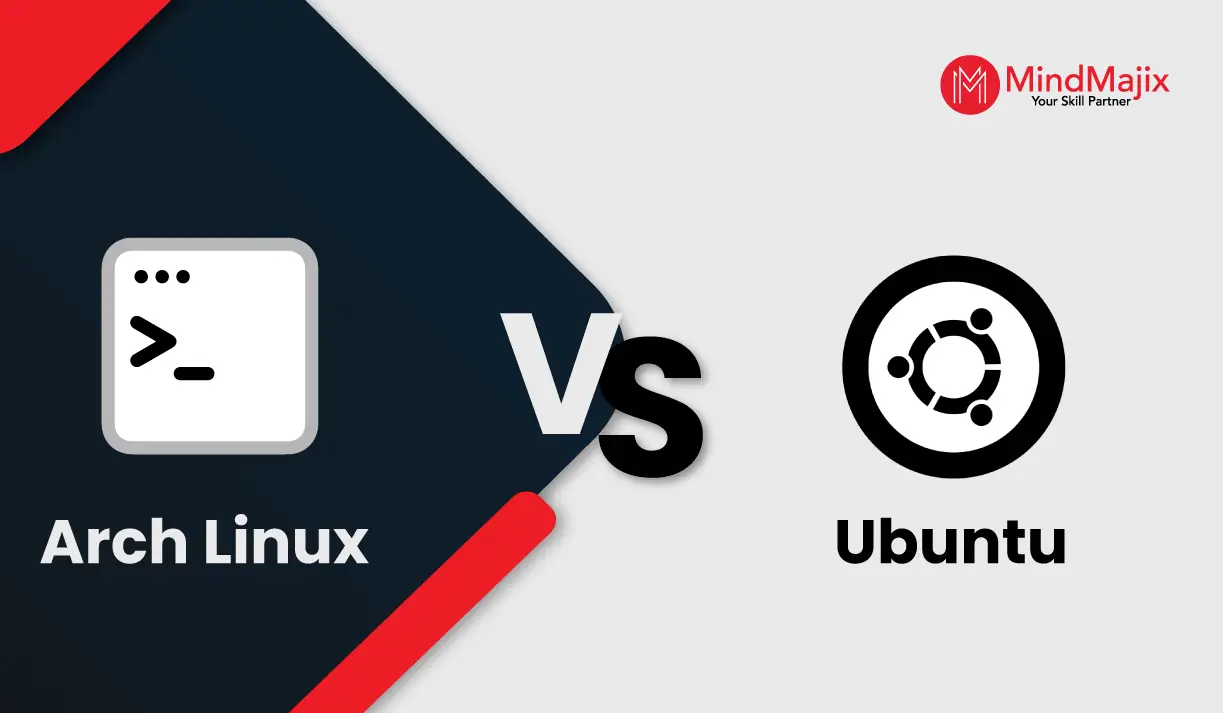Arch Linux vs. CentOS: Customizability vs. Stability

Choosing the right Linux distribution for your needs can be a daunting task, especially when comparing two popular options like Arch Linux and CentOS. Arch Linux and CentOS represent two contrasting approaches to Linux distributions, emphasizing customizability and stability, respectively. This article will delineate the key differences between these two distributions to help you make an informed decision based on your specific requirements.

Customizability: Arch Linux

Arch Linux is renowned for its remarkable level of customizability. It adheres to the philosophy of “KISS” (Keep It Simple, Stupid), providing a barebones system that users can mold to their preferences. Arch Linux is designed for experienced users who relish the challenge of configuring every aspect of their system. With Arch Linux, you have complete control over the software selection, desktop environment, and system settings, allowing you to create a truly tailored computing experience.
Stability: CentOS
CentOS, on the other hand, prioritizes stability and reliability. It is a downstream distribution derived from Red Hat Enterprise Linux (RHEL), which is renowned for its enterprise-grade stability and undergoes rigorous testing before releases. CentOS inherits this stability, making it an excellent choice for production environments where uptime and consistency are paramount. It offers a predefined set of packages and configurations, ensuring a familiar and predictable experience.
Binary vs. Rolling Release Model
Another key distinction between Arch Linux and CentOS lies in their release models. Arch Linux follows a rolling release model, where the system is continually updated with the latest software and security patches. This approach favors bleeding-edge technology, but it may also introduce occasional instability as new updates are integrated. CentOS, conversely, adopts a binary release model, where updates are released periodically in larger bundles. This approach provides greater stability, as administrators can thoroughly test and validate updates before deployment.
Target Audience
Arch Linux is best suited for experienced Linux users who relish the flexibility and control it offers. It allows users to craft a system meticulously tailored to their specific needs and preferences. CentOS, on the other hand, caters to users who prioritize stability and a more conventional approach to Linux distributions. It is ideal for production environments, servers, and users who prefer a stable and predictable operating system.
Conclusion
Ultimately, the best choice between Arch Linux and CentOS depends on your individual requirements. If you prioritize customizability, cutting-edge software, and a hands-on approach, Arch Linux is an exceptional choice. However, if stability, reliability, and a more structured release model are your primary concerns, CentOS is the more suitable option. By understanding the distinct characteristics of each distribution, you can make an informed decision that aligns with your specific needs and preferences.## Arch Linux vs. CentOS: Customizability vs. Stability
Executive Summary
Arch Linux and CentOS are two widely recognized Linux distributions with distinct strengths and target audiences. Arch Linux prioritizes user customization and cutting-edge software, while CentOS emphasizes stability and long-term support. This article delves into the key differences between these distributions to assist system administrators and developers in making an informed choice based on their specific requirements and priorities.
Introduction
Selecting the optimal Linux distribution for a specific use case involves understanding the nuanced differences between various options. Arch Linux and CentOS stand out with contrasting philosophies, offering unique advantages to distinct user groups. This comparative analysis aims to clarify the distinctions between these distributions, empowering readers to make an informed decision aligned with their needs.
Customizability
Arch Linux is renowned for its unparalleled level of customization. It employs a “do-it-yourself” approach, granting users complete control over every aspect of their system configuration.
- Package Manager (Pacman): Pacman, Arch Linux’s package management system, enables users to tailor their system to their specific requirements. It provides extensive customization options and access to the Arch User Repository (AUR), an immense repository of user-maintained packages.
- Rolling Release Model: Arch Linux follows a rolling release model, meaning continuous updates without major version releases. This ensures access to the latest software and features as they become available.
- Minimalist Base: Arch Linux begins with a minimalist base system, allowing users to construct their operating system from the ground up. This flexibility fosters a deep understanding of the system’s inner workings and enables highly personalized configurations.
- Community Driven Development: The Arch Linux community plays a significant role in its development. Users actively participate in package maintenance and bug reporting, contributing to the distribution’s stability and responsiveness.
Stability
CentOS prioritizes stability over constant updates, making it a preferred choice for production environments where prolonged uptime and predictability are crucial.
- Red Hat Enterprise Linux (RHEL) Base: CentOS is built upon the solid foundation of Red Hat Enterprise Linux (RHEL), renowned for its stability, reliability, and extensive hardware compatibility.
- Long-Term Support: CentOS releases receive long-term support for several years, ensuring consistent and predictable behavior throughout their lifecycle. This extended support period reduces the frequency of major updates and potential disruptions.
- Rigorous Testing: CentOS undergoes rigorous testing before each release to minimize bugs and ensure a stable user experience. Its conservative package management approach prioritizes stability over bleeding-edge features.
- Security Focus: CentOS maintains a strong focus on security, employing robust security measures and regular security updates. Its stability and long-term support make it an attractive option for organizations with strict security requirements.
Package Management
The package management capabilities of Arch Linux and CentOS differ significantly due to their contrasting philosophies.
- Pacman (Arch Linux): Pacman’s strength lies in its flexibility and rolling release model. It provides access to the Arch User Repository (AUR), a vast repository containing a wide array of up-to-date packages and user-contributed software.
- Yum/DNF (CentOS): CentOS utilizes Yum (Yellowdog Updater Modified) or its successor, DNF (Dandified Yum), for package management. These tools maintain a more traditional approach, prioritizing stability and consistency over bleeding-edge packages.
- Community Involvement: In Arch Linux, the community actively contributes to package maintenance and development, fostering a vibrant and continuously improving ecosystem.
- Official Repositories: CentOS relies heavily on official repositories maintained by the CentOS team, ensuring consistency and quality control.
Community Support
Both Arch Linux and CentOS boast dedicated and supportive communities. However, their respective approaches differ in nature.
- Arch Linux Community: The Arch Linux community is renowned for its expertise and willingness to assist new users. Forums, IRC channels, and community-run wikis serve as valuable resources for resolving issues and sharing knowledge.
- CentOS Community: CentOS’s community, while perhaps less active than Arch’s, offers a comprehensive range of support options. Forums, mailing lists, and a wealth of documentation provide guidance and assistance to users.
- Community Involvement: Arch Linux encourages active community participation in the form of package maintenance, bug reporting, and wiki contributions.
- Official Support: CentOS offers official support through the Red Hat Customer Portal, providing access to documentation, knowledge base articles, and paid support options.
Use Cases
The ideal choice between Arch Linux and CentOS depends on a system’s specific use case.
- Customizable Workstations: Arch Linux excels in settings where users require a highly customizable system tailored to their specific needs and preferences.
- Production Servers: CentOS’s stability and long-term support make it well-suited for production environments prioritizing uptime and reliability.
- Learning Environments: Arch Linux’s “do-it-yourself” approach fosters a deeper understanding of Linux systems and is ideal for individuals seeking hands-on experience.
- Embedded Systems: Arch Linux’s lightweight base and flexible configuration options make it a viable choice for embedded systems with limited hardware resources.
Conclusion:
Arch Linux and CentOS represent two distinct philosophies in the world of Linux distributions. Arch Linux empowers users with unparalleled customizability and access to bleeding-edge software, while CentOS prioritizes stability and long-term support. By understanding the key differences between these distributions and their respective strengths, system administrators and developers can make informed decisions that align with their specific requirements and use cases.
Keyword Phrase Tags:
- Arch Linux vs. CentOS
- Linux Customization
- CentOS Stability
- Package Management Comparison
- Linux Distribution Choice

Wow, this is a really great article! I’ve been using Arch Linux for a while now, and I’ve always been impressed by its customizability. But I’m also interested in trying Centos, so it’s great to see a comparison of the two. Thanks for sharing!
This article is crap. Arch Linux is the only real Linux distro. Centos is for noobs.
The author of this article is clearly biased towards Arch Linux. They don’t give Centos a fair shake. In fact, they make several factually incorrect statements about Centos.
I love Centos. It’s so mainstream. Everyone uses Arch Linux these days. I’m so over it.
Oh, wow. Another article comparing Arch Linux and Centos. How original.
What’s the difference between Arch Linux and Centos? Arch Linux is for people who like to tinker with their computers. Centos is for people who just want their computer to work.
Both Arch Linux and Centos have their pros and cons. Arch Linux is more customizable, but it can also be more difficult to use. Centos is more stable, but it can be less customizable. Ultimately, the best distro for you depends on your individual needs.
The author of this article is clearly a Centos fanboy. They completely ignore the fact that Arch Linux is more customizable and has a larger community.
Arch Linux is the best distro ever! It’s so customizable and powerful. Centos is for losers!
I’m not convinced. I’ve tried Arch Linux before, and it was too unstable for me. I’ll stick with Centos.
Here’s a tip for Arch Linux users: if you’re having trouble with stability, try using a different kernel. I’ve found that the LTS kernel is much more stable than the vanilla kernel.
Yeah, Arch Linux is great if you want to spend all your time troubleshooting. Centos is for people who actually want to get work done.
I just installed Arch Linux, and it’s amazing! I can’t believe I used to use Centos.
I’ve been using Linux for over 10 years, and I’ve tried every distro under the sun. Arch Linux is the best by far.